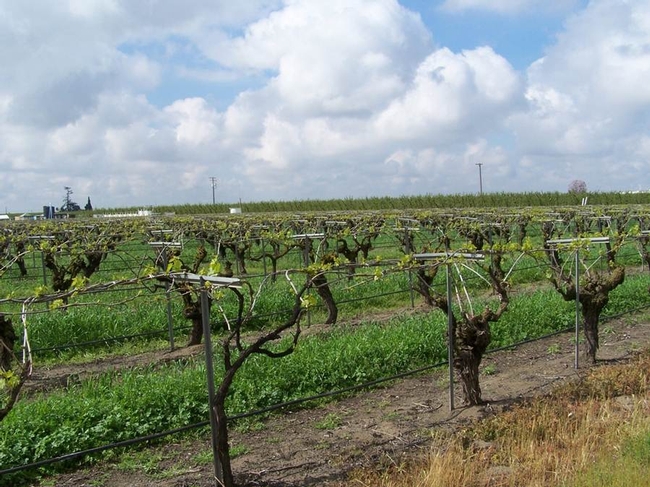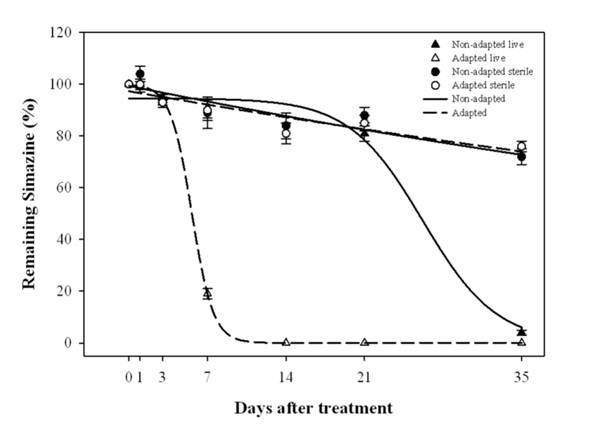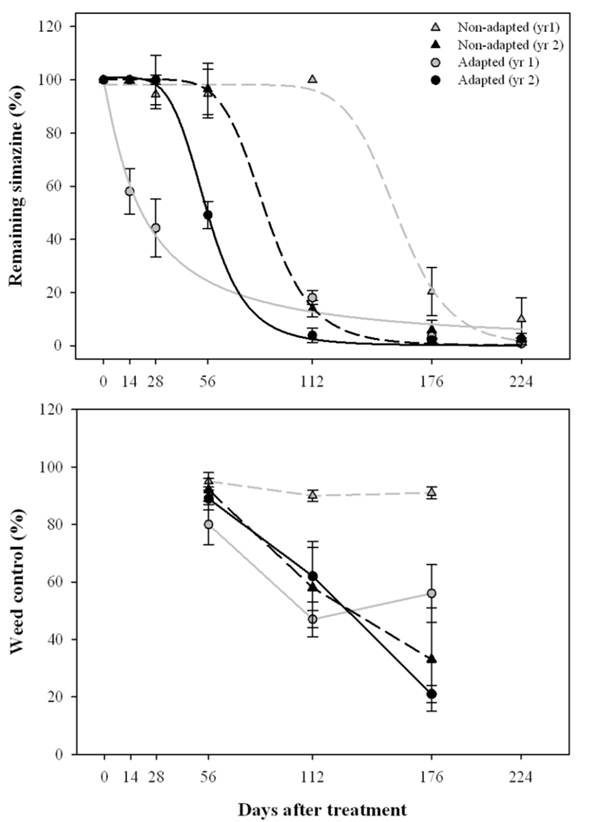Happy Halloween!
Today I wanted to follow up on a previous post on the phenonena of enhanced microbial degradation of the residual herbicide simazine in orchards and vineyards. In that post, I described research that we did a few years ago to address faster-than-normal degradation of simazine in citrus orchards. 
The results of concurrent study done in raisin vineyards near Parlier was published in the most recent issue of the journal Weed Science. Unfortunately, that journal is not open-access but academic folks can find the article under the citation Abit, Rainbolt, Krutz, Shaner, and Hanson. "Effects of long-term use on simazine dissipation in central California vineyards" Weed Science 60:531-536. A copy of poster that we presented at a Western Society of Weed Science meeting is attached at the end of the post
In this research we collected soil from two raisin vineyards near Parlier, CA and conducted laboratory assays to evaluate the relative rate of simazine dissiption. (note that these were moist soil samples held at room temperature in the lab - so the relative rate is more important). We autoclaved (heat sterilized) half of the soil to stop any microbial activity and kept half "live" during the incubation. In the figure below, you can clearly see that the simazine was barely degraded at all in the sterilized soil from either vineyard (flat lines). However, in the live soil, there were pretty dramatic differences in how fast simazine dissipated indicating two things: 1) simazine degradation is due primarily to biotic activity in soil (this was already well-characterized) and 2) simazine degraded much faster in soil from the vineyard with a long history of simazine use (at least 15 years).

In a second study, we applied simazine at normal use rates in the two Parlier vineyards and collected soil samples at various timepoints afterwards (maximum of 224 days after treatment) and analyzed simazine concentrations remaining in the soil. We also counted the weeds that emerged in each plot at several time points to determine the effects of simazine degradation on residual weed control. In figure 2 below, you can see compare the simazine degradation (top) to the weed control (bottom). Although there was a big difference in the two years (due to rainfall and temperature patterns), more rapid degradation had a pretty obvious effect on the duration of weed control.

As in the citrus orchard studies, these results confirm that repeated use of simazine can lead to more rapid degradation of the herbicide and reduced weed control and is something that growers and pest control advisors should be aware of. As always, we recommend monitoring orchard conditions and adjusting weed control strategies accordingly
This research was partially supported by funding from the California Citrus Research Board and USDA-ARS.
Take care, Brad
A couple of my previous posts on herbicide degradation can be found at:
http://ucanr.org/blogs/blogcore/postdetail.cfm?postnum=7953 and
http://ucanr.org/blogs/blogcore/postdetail.cfm?postnum=5929 and http://ucanr.org/blogs/blogcore/postdetail.cfm?postnum=3923
Attached Files: